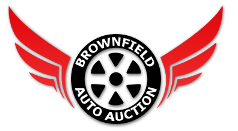Auto Auctions 101
Tips for First Time Auction Buyers
- ARRIVE EARLY. Arrive at least 2 hours before auction start time.
- DO YOUR DUE DILIGENCE. Use the two hours of preview to ask questions
- REMINDER: Every auction is different and they each have different rules, customs, policies, terms, conditions, etc.
- Physically inspect the vehicles prior to making or accepting an offer. Take your mechanic, scanner, etc. Take whatever tools are necessary for you to do your homework. Most importantly, ask for paperwork clarifications or doubts BEFORE the start of the auction.
- Have your wallet on you and cash available for deposit. A deposit is needed for EVERY bid the second you are sold the vehicle.
- Know what you’re buying. Everything is sold “AS IS, WHERE IS” with NO guarantees or warranties. If you don't make sure you are bidding on the correct car number and your are the highest bidder, you will be required to purchase the vehicle. Also, if you do not do your due diligence and an issue with the vehicle arises after purchasing it, guess what, it’s yours!
- Ask the ringman on the floor for help. That's what they are for! If you do not understand how much is being asked or your bid has not been taken, reach out to them.
- Listen to the auctioneer. He or she can increment bids by $25, $50, $100, $250, and more. Make sure you understand how much is being asked and hold yourself accountable for your bids. Lastly, listen to him/ her to know if a car is sold to you, to someone else, or it is placed as an "offer".
Here is a list of some major defects that may occur in used vehicles:
Frame & Body
Frame-cracks, corrective welds, or rusted through
Dog tracks—bent or twisted frame
Engine
Oil leakage, excluding normal seepage
Cracked block or head
Belts missing or inoperable
Knocks or misses related to camshaft
lifters and push rods
Abnormal exhaust discharge
Transmission & Drive Shaf
Improper fluid level or leakage, excluding
normal seepage
Cracked or damaged case which is visible
Abnormal noise or vibration caused by
faulty transmission or drive shaft
Improper shifting or functioning in any gear
Manual clutch slips or chatters
Differential
Improper fluid level or leakage, excluding
normal seepage
Cracked of damaged housing which is visible
Abnormal noise or vibration caused by
faulty differential
Cooling System
Leakage including radiator Improperly
functioning water pump
Electrical System
Battery leakage
Improperly functioning alternator,
generator, battery, or starter
Fuel System
Visible leakage
Inoperable Accessories
Gauges or warning devices
Air conditioner
Heater & Defroster
Frame & Body
Frame-cracks, corrective welds, or rusted through
Dog tracks—bent or twisted frame
Engine
Oil leakage, excluding normal seepage
Cracked block or head
Belts missing or inoperable
Knocks or misses related to camshaft
lifters and push rods
Abnormal exhaust discharge
Transmission & Drive Shaf
Improper fluid level or leakage, excluding
normal seepage
Cracked or damaged case which is visible
Abnormal noise or vibration caused by
faulty transmission or drive shaft
Improper shifting or functioning in any gear
Manual clutch slips or chatters
Differential
Improper fluid level or leakage, excluding
normal seepage
Cracked of damaged housing which is visible
Abnormal noise or vibration caused by
faulty differential
Cooling System
Leakage including radiator Improperly
functioning water pump
Electrical System
Battery leakage
Improperly functioning alternator,
generator, battery, or starter
Fuel System
Visible leakage
Inoperable Accessories
Gauges or warning devices
Air conditioner
Heater & Defroster
Brake System
Failure warning light broken Pedal not firm under pressure (DOT spec.)
Pedal not firm under pressure (DOT spec.)
Not enough pedal reserve (DOT spec.)
Does not stop vehicle in straight line (DOT spec.)
Hoses damaged
Drum or rotor too thin (Mfgr. Specs)
Lining or pad thickness less than 1/32 inch
Power unit not operating or leaking
Structural or mechanical parts damaged
Air Bags
Steering System
Too much free play at steering wheel (DOT spec.)
Free play in linkage more than 1/4 inch
Steering gear binds or jams
Front wheels aligned improperly (DOT spec.)
Power unit belts cracked or slipping
Power unit fluid level improper
Suspension System
Ball joint seals damaged
Structural parts bent or damaged
Stabilizer bar disconnected
Spring broken
Rubber bushings damaged or missing
Radius rod damaged or missing
Shock absorber leaking or functioning improperly
Tires
Tread depth less than 2/32 inch
Sizes mismatched
Visible damage
Wheels
Visible cracks, damage or repairs
Mounting bolts loose or missing
Exhaust System
Leakage
Catalytic Converter
